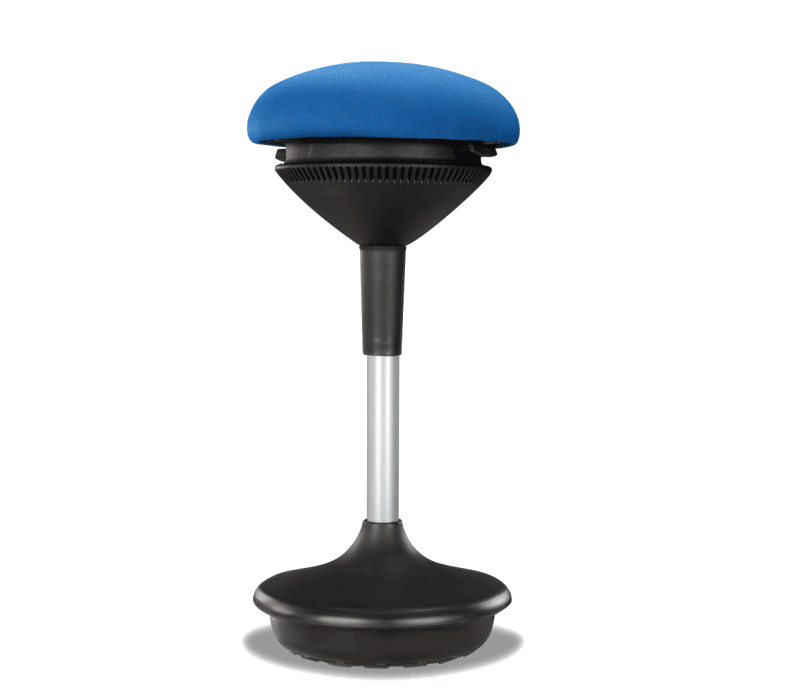Standing Desk Stools
Best for short term sitting or perching due to the lack of lumbar support, ergonomic stools offer a great way to mix up positions and take a break from standing.
Learn MoreStools for standing desks
Short duration seating
A great complement to a standing desk and a lumbar-supporting ergonomic chair, a height adjustable stool provides an alternative place to sit or perch between longer standing and sitting sessions, taking some pressure off your legs/feet and offering an additional position to keep your body moving.
Assume a perched posture with a standing desk stool like the Starling: partially seated, partially standing.

Sit or perch
Enjoy the freedom to change posture and mix up your movements (sit, stand, perch, repeat). Ergonomic desk stools rotate, tilt, pivot, swivel, and adjust to support a range of positions, from the standing perch to the traditional sit and everything in between. Perching opens up the hip angle to let the lumbar spine curve naturally.

Move more
Movement is a key to health. An ergonomic setup encourages switching between sitting and standing throughout the day. Frequent movement is healthier than remaining in any one static position for long durations. Active stools like the Motion Stool promote movement and engage the core, increasing circulation and strengthening abdominal and back muscles. Move more with an ergonomic stool.

Standing desk stool videos
Stools for active seating comparison
Choose a chair for longer duration seating
Standing desk stools are not recommended for long duration use as they do not offer lumbar support, and users tend to slouch when using a stool for long periods. They also don't provide the seat and arm support offered by ergonomic chairs. Thus, an ergonomic chair is needed by most users to properly take a break from standing. Ergonomic desk stools are a great addition when paired with a height adjustable desk for short-term breaks from standing or perched standing as long as slouching is avoided. In other words, consider primarily using an ergonomic chair when sitting and then add a stool for more posture options like perching on a stool while maintaining lumbar curve in the back. The more ways you can vary your posture throughout the day, the more you'll move. Movement between healthy postures like standing, sitting, and perching is the key to a healthy office setup.











